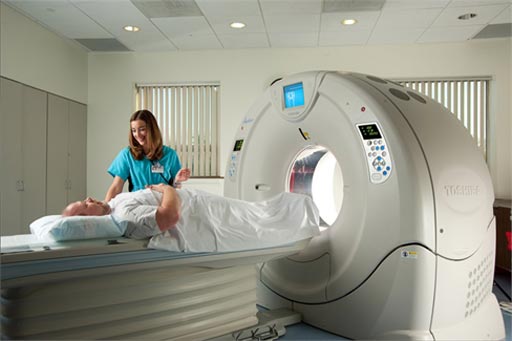Non-Invasive Tests Can Help Predict Heart Attacks
By MedImaging International staff writers
Posted on 14 Mar 2017
Researchers have shown that non-invasive Computed Tomography (CT) angiography, together with stress tests, can be used to help clinicians predict heart attacks and other adverse cardiovascular event in their patients.Posted on 14 Mar 2017
The researchers studied 379 patients, all of whom had been referred for Invasive Coronary Angiography (ICA). The study compared invasive, and non-invasive ICA methods, and found that both approaches were equally efficient at identifying patients at risk of a future major adverse cardiac event. Standard practice until now has been to use both ICA and stress tests, together with Single Photon Emission Tomography (SPECT) myocardial imaging, but the approach is invasive and expensive.

Image: A non-invasive Computed Tomography (CT) angiography exam (Photo courtesy of Pinnacle Health).
The researchers from the Johns Hopkins Hospital and School of Medicine published their study online in the March 14, 2017, issue of the journal Radiology. The results showed that 51 patients (13.5%), had one or more Major Adverse Cardiac Events (MACE). Both approaches had similar high results for predicting MACE two years after presentation, as well as event-free survival.
The author of the study, João A.C. Lima, MD, Johns Hopkins Hospital and School of Medicine, said, “Previous studies show that a lesion is hemodynamically significant if there is a significant blood pressure drop corresponding to a big reduction in blood flow across the stenosis. If plaque has those characteristics, the patient should be targeted for intervention, be it with a stent or downstream bypass surgery. Invasive angiography is generally safe, but it can cause vascular problems in a significant number of patients, most commonly at site of the puncture. In rare cases, it can cause strokes or heart attacks. These risks are not trivial. The key finding of our study is that both techniques are equally effective in identifying which patients are going to have trouble down the road. The noninvasive option should be a preferred or at least strongly considered option by cardiologists and radiologists managing these patients because it is safer and less expensive, and patients like it better.”










 Guided Devices.jpg)



